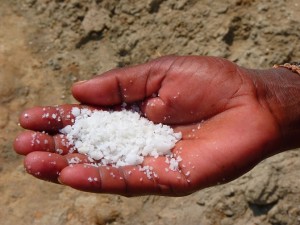 MIT researchers have devised a new alternative to traditional desalination technology that could address the challenges that many countries are facing and why they are not doing desalination; cost and infrastructure.
MIT researchers have devised a new alternative to traditional desalination technology that could address the challenges that many countries are facing and why they are not doing desalination; cost and infrastructure.
In a process called electrodialysis, an electric shock is introduced to a stream of flowing water, resulting in the water with higher salt content separating itself from sodium-depleted water. Whereas standard desalination has until now worked via the use of barriers to strain sodium particles from water, this new method utilises a porous material made of small glass particles, called a frit with electrodes attached to the sides. Once the electrical current reaches a particular point, the water flow will break into two channels, allowing for fresh water to be collected for use.
Electrodialysis also removes other contaminants, and because the glass filter is relatively inexpensive, the technology is completely scalable and could have a major impact on the water crisis that the whole world is facing.
Graduate student and research team member Sven Schlumpberger said in a statement, Unlike some other approaches to desalination, this one requires little infrastructure, so it might be useful for portable systems for use in remote locations, or for emergencies where water supplies are disrupted by storms or earthquake.
Researchers from the University of Texas at Austin as well as at the University of Marburg in Germany are also using electricity to take the salt out of water. A water chip which has a microchannel with two branches and creates a small electrical field that separates salt from seawater has been developed and although this technology is still being developed there are great hopes for it.
The water chip currently works at the nanoscale, using so little energy that it is able to run off a small battery that can be bought at any store. It works by applying a 3.0 volt electrical charge to the plastic water chip. The reaction results in an ion depletion zone with an embedded electrode that neutralises chloride ions. This results in the fresh water being directed down one channel while the salts in the water go down another. While the technology only purifies one nanolitre at a time and only has a mere 25% efficiency rate, plans are afoot to upscale the model for use in small villages.
Hire water coolers and purchase water coolers in London. Get bottled water coolers from Living-Water.





